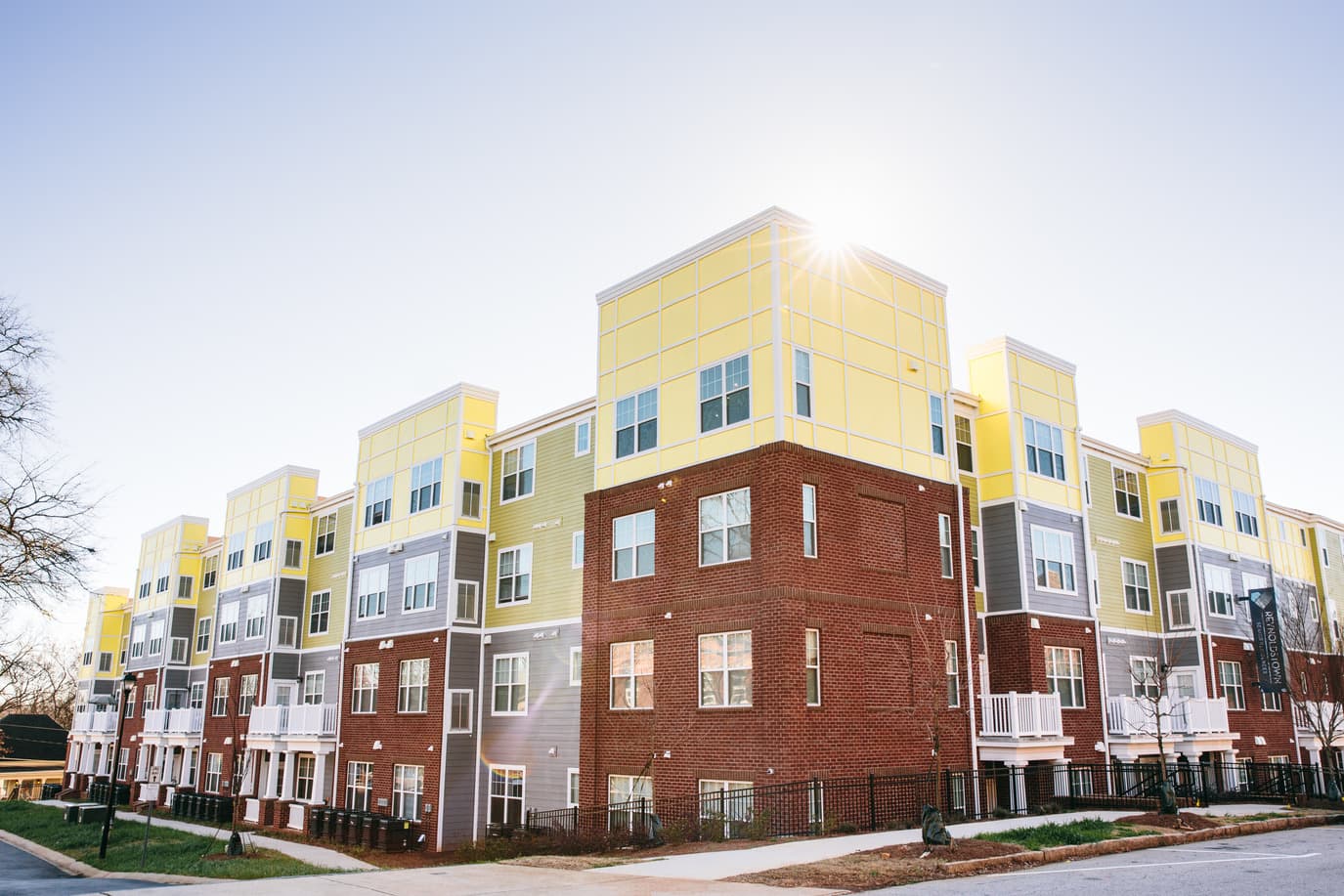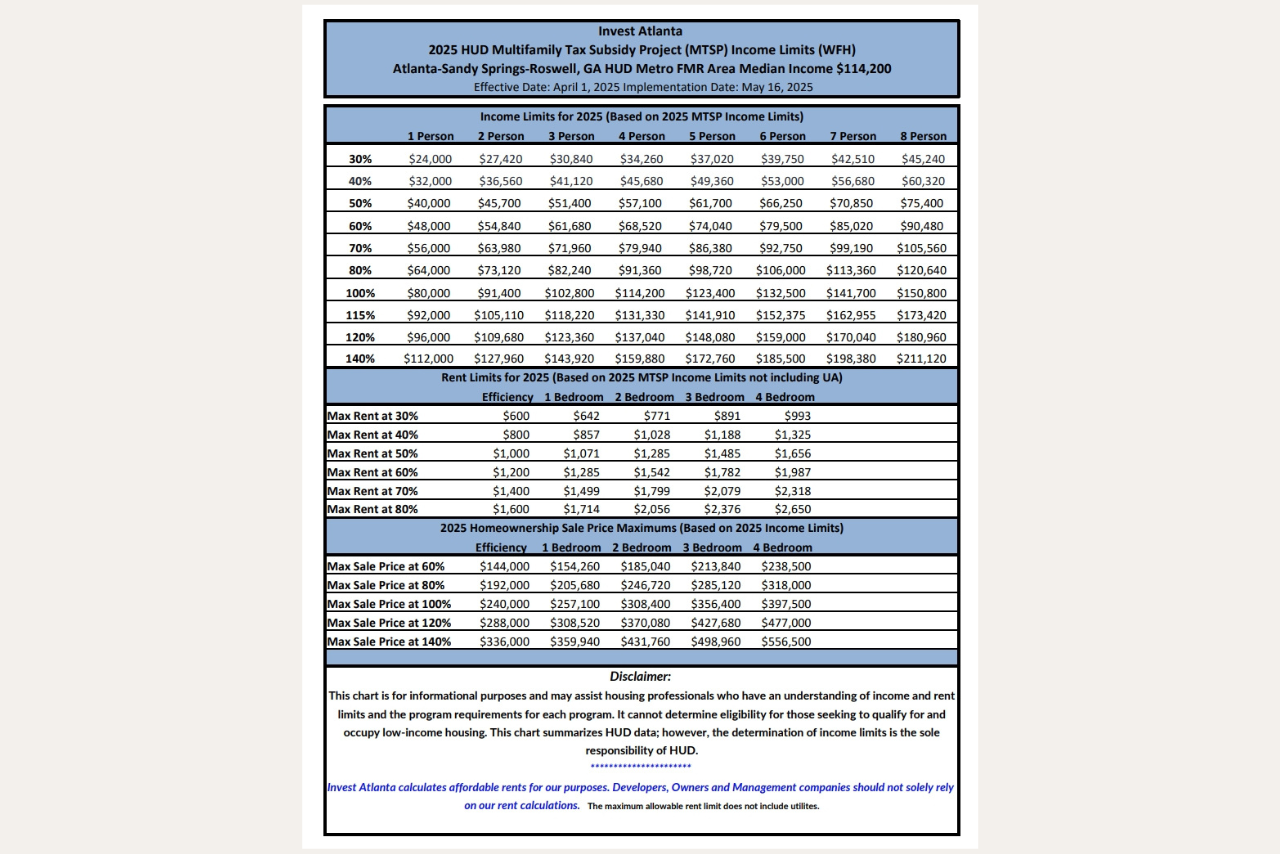Affordable housing: Area Median Income and what it means in 2025
We are often asked, “how does the Atlanta Beltline define affordability?” When we say “affordable,” we simply mean: does a low- or moderate-income family have enough monthly income to rent or purchase a house or apartment and still have money left ...
- Affordable Housing


We are often asked, “how does the Atlanta Beltline define affordability?” When we say “affordable,” we simply mean: does a low- or moderate-income family have enough monthly income to rent or purchase a house or apartment and still have money left for other necessities like food, clothing and medicine?
Affordability is defined by the federal government as a household not paying more than 30% of its total income before taxes toward rent, mortgage payments, utilities, taxes, insurance and other related housing expenses. The Beltline has a goal of creating or preserving 5,600 affordable homes around the Beltline by 2030.
Area Median Income (AMI) is a key metric used by cities and the federal government to determine who qualifies for affordable housing support. Simply defined, if you line up all households in a region by how much they earn per year from wealthiest to poorest, AMI would be the annual income of the household in the very middle - or the median. AMI is then used as a benchmark for that area.
People earning less than AMI are typically in greater need of affordable housing. Housing assistance programs use AMI to determine eligibility. Most federal, state, and local programs qualify people based on their income levels related to AMI so that the programs use the same benchmark.
The U.S. Department of Housing and Urban Development (HUD) releases statistics each year on income for metropolitan areas. The city of Atlanta is in the Atlanta, Roswell, Sandy Springs Metropolitan Statistical Area, or MSA, which includes 29 counties. HUD calculates the annual income of families in this area and determines the income that is in the middle and calls that the AMI for the area, which is also dependent on family size.
Affordable rental housing in Atlanta generally serves families earning 80% or less of AMI. Affordable home ownership serves families earning up to 120% of AMI. The Beltline recognizes the urgency to focus on affordable housing for families earning 60% of AMI or less, a significant need in Atlanta, and works with partners to create and preserve affordable housing options that target a wide range of households at different income levels to ensure a mix of options is available in neighborhoods inside the Tax Allocation District (TAD) and broader Beltline Planning Area.
HUD Income Limits in 2025

Low Income: Households earning 80% or less of AMI
Very Low Income: Households earning 50% or less of AMI
Extremely Low Income: Households earning 30% or less of AMI
For example, in 2025, a family of four earning less than $91,360 per year would be considered low income.
Housing costs are just one part of the affordability equation. Good paying jobs and access to transportation also impact income and quality of life. This is why the Atlanta Beltline is focused on housing, economic development and transit with the goal of implementing the Beltline project in a way that ensures all Atlantans have the opportunity to participate in and benefit from its economic growth for generations to come.
We invite you to explore a number of tools and resources for both owners and renters at www.beltline.org/housing and www.beltline.org/empower.
Subscribe to In The Loop, our monthly newsletter, for Beltline news, events, announcements and more.